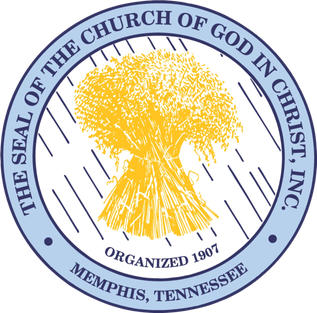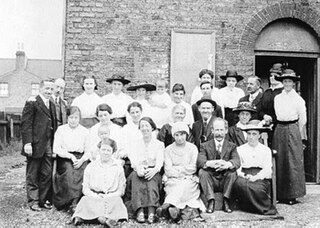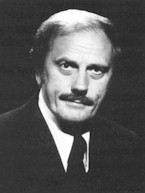
Pentecostalism or classical Pentecostalism is a Protestant Charismatic Christian movement that emphasizes direct personal experience of God through baptism with the Holy Spirit. The term Pentecostal is derived from Pentecost, an event that commemorates the descent of the Holy Spirit upon the followers of Jesus Christ, and the speaking in unlearned tongues as described in the second chapter of the Acts of the Apostles. In Greek, it is the name for the Jewish Feast of Weeks.

The Church of God in Christ (COGIC) is a Holiness–Pentecostal Christian denomination. COGIC is the largest Pentecostal denomination in the United States. Although an international and multi-ethnic religious organization, it has a predominantly African-American membership in the United States. The international headquarters is in Memphis, Tennessee. The current Presiding Bishop is Bishop John Drew Sheard Sr., who is the Senior Pastor of the Greater Emmanuel Institutional Church of God in Christ of Detroit, Michigan. He was elected as the denomination's leader on March 27, 2021.

The Plymouth Brethren or Assemblies of Brethren are a low church and non-conformist Christian movement whose history can be traced back to Dublin, Ireland, in the mid to late 1820s, where they originated from Anglicanism. The group emphasizes sola scriptura, the belief that the Bible is the supreme authority for church doctrine and practice, over and above any other source of authority. Plymouth Brethren generally see themselves as a network of like-minded free churches, not as a Christian denomination.

Calvary Chapel is an association of evangelical churches, maintains a number of radio stations around the world and operates many local Calvary Chapel Bible College programs.

The Church of Jesus Christ is an international Christian religious denomination headquartered in Monongahela, Pennsylvania, United States. The church is a Christian Restorationist church, the third-largest church to believe in the Book of Mormon as scripture. The church considers itself the gospel restored, or the original church and good news as established by Jesus Christ in the New Testament, restored upon the earth. It also claims to be the spiritual successor to the Church of Christ, organized by Joseph Smith on April 6, 1830. The church sees Sidney Rigdon as Smith's rightful successor following the assassination of Smith because Rigdon was Smith's first counselor in the First Presidency. The church is not officially affiliated with any other church, organization or denomination.

Anabaptist theology, also known as Anabaptist doctrine, is a theological tradition reflecting the doctrine of the Anabaptist Churches. The major branches of Anabaptist Christianity agree on core doctrines but have nuances in practice. While the adherence to doctrine is important in Anabaptist Christianity, living righteously is stressed to a greater degree.
The Orthodox Presbyterian Church (OPC) is a confessional Presbyterian denomination located primarily in the United States, with additional congregations in Canada, Bermuda, and Puerto Rico. It was founded by conservative members of the Presbyterian Church in the United States of America (PCUSA), who objected to the rise of Liberal and Modernist theology in the 1930s. The OPC is considered to have had an influence on evangelicalism far beyond its size.

John Richard Wimber was an American pastor, Christian author and musician. Initially ordained as a Quaker minister, he became an early, pioneering pastor of charismatic congregations, and a popular thought leader in modern Christian publications on the third person of the Christian Trinity, the Holy Spirit, and the Holy Spirit’s action in modern churches through miraculous phenomena referred to as miracles, or signs and wonders. Wimber was a founding leader of the Vineyard Movement, a Christian movement that Ken Gulliksen began in the United States and that later became a wider denomination.
Armstrongism is the teachings and doctrines of Herbert W. Armstrong while leader of the Worldwide Church of God (WCG). His teachings are professed by him and his followers to be the restored true Gospel of the Bible. Armstrong said they were revealed to him by God during his study of the Bible. The term Armstrongite is sometimes used to refer to those that follow Armstrong's teachings. Armstrongism and Armstrongite are generally considered derogatory by those to whom it is applied, who prefer to be known as members of the Church of God (COG). These doctrines were also espoused by his sons Richard David Armstrong and Garner Ted Armstrong with slight variations.
The Latter Rain, also known as the New Order or the New Order of the Latter Rain, was a post–World War II movement within Pentecostal Christianity which remains controversial. The movement saw itself as a continuation of the restorationism of early pentecostalism. The movement began with major revivals between 1948 and 1952, and became established as a large semi-organized movement by 1952 and continued into the 1960s. The movement had a profound impact on subsequent movements as its participants dispersed throughout the broader charismatic and pentecostal movements beginning in the 1960s.

The cell group is a form of church organization that is used in many Christian churches. Cell groups are generally intended to teach the Bible and personalize Christian fellowship. They are always used in cell churches, but also occur in parachurch organizations and other interdenominational settings, where they are usually referred to as such as Bible study groups. In Methodism, they are known as class meetings and are a means of grace; in Catholicism, they are known as basic ecclesial communities.

Mark A. Driscoll is an American evangelical pastor and author who founded the now defunct Mars Hill Church. He is the senior and founding pastor of the Trinity Church in Scottsdale, Arizona, which was founded in 2016.

Hobart Freeman was a charismatic preacher and author, who ministered in northern Indiana and actively promoted faith healing.
Robert Bunger Thieme, Jr. was pastor of Berachah Church, a nondenominational Christian church in Houston, Texas, from 1950 to 2003. Affectionately called "the Colonel" by his congregation, he was a dispensationalist theologian who wrote over a hundred books and conducted over 10,000 sermons on various theological topics during his 55 years as a pastor.
In Christianity, an elder is a person who is valued for wisdom and holds a position of responsibility and authority in a Christian group. In some Christian traditions an elder is an ordained person who serves a local church or churches and who has been ordained to a ministry of word, sacrament and order, filling the preaching and pastoral offices. In other Christian traditions, an elder may be a lay person serving as an administrator in a local congregation, or be ordained and serving in preaching or pastoral roles. There is a distinction between ordained elders and lay elders. The two concepts may be conflated in everyday conversation. In non-Christian world cultures the term elder refers to age and experience, and the Christian sense of elder is partly related to this.
Donald Lee Barnett was an American pastor who founded Community Chapel and Bible Training Center, a controversial church near Burien, Washington, and was its only pastor during its 21-year history, from 1967 to 1988. In 1988 he formed the Church of Agape located at 126 Logan Avenue South in Renton, Washington.

Wasilla Bible Church is a non-denominational, evangelical Christian church located in Wasilla, Alaska. Now retired Pastor Larry Kroon describes the congregation as "socially conservative". Wasilla Bible Church offers ministries devoted to family affairs.
Pentecostalism is a renewal movement within Protestant Christianity that places special emphasis on a direct personal experience of God through the baptism with the Holy Spirit. For Christians, this event commemorates the descent of the Holy Spirit upon the followers of Jesus Christ, as described in the second chapter of the Book of Acts. Pentecostalism was established in Kerala at the start of the 20th century.

The Swedish Pentecostal Movement is a Pentecostal movement in Sweden. Many, but not all, of these, are members of the Pentecostal Alliance of Independent Churches, which was founded in 2001. The Pentecostal movement spread to Sweden by 1907 from the 1904–1905 Welsh Revival and the Azusa Street Revival in Los Angeles in 1906.
The Open Brethren, sometimes called Christian Brethren, are a group of Evangelical Christian churches that arose in the late 1820s as part of the Assembly Movement within the Plymouth Brethren tradition. They originated in Ireland before spreading throughout the British Isles, and today they have an estimated 26,000 assemblies worldwide.













